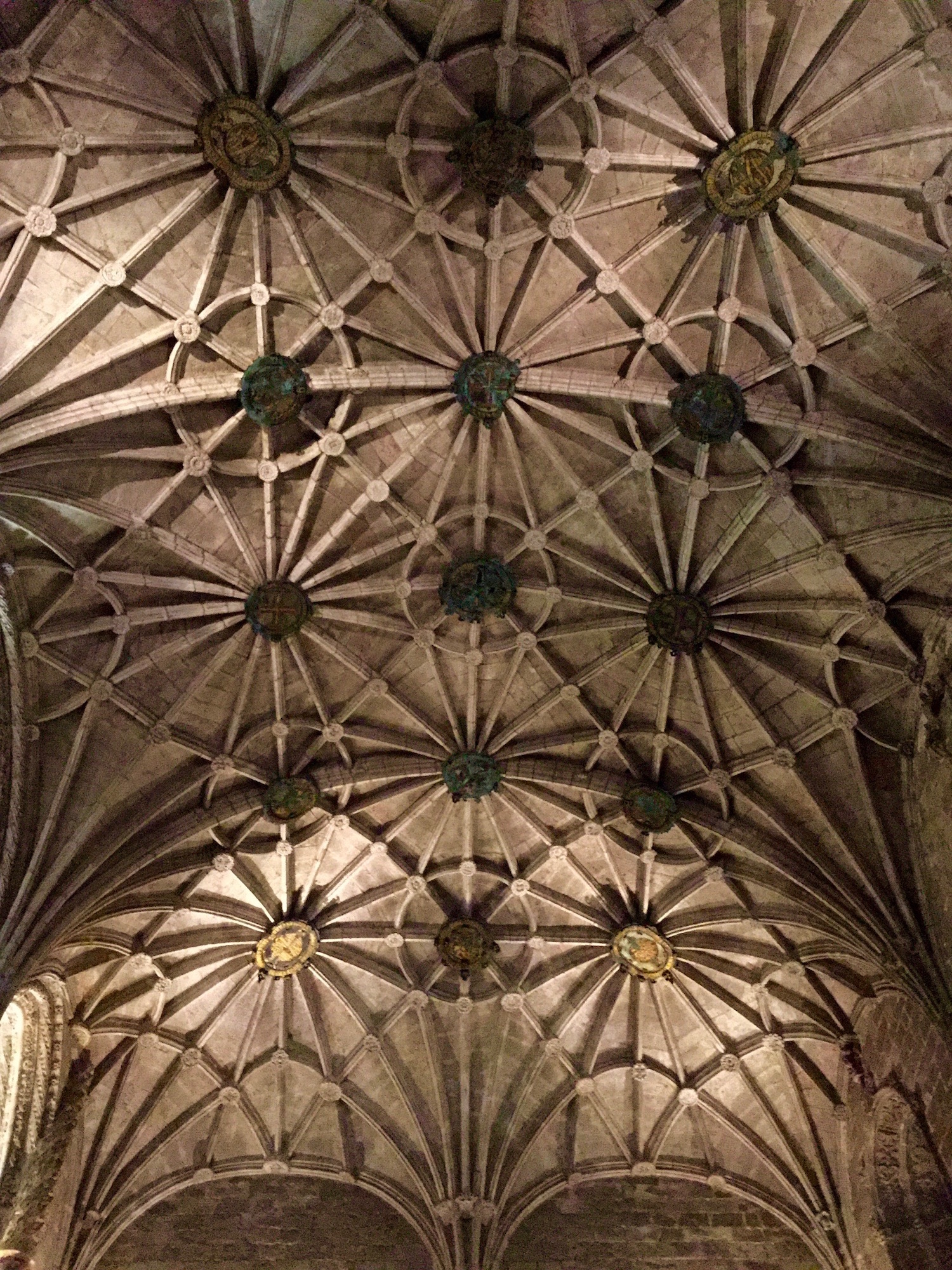Lately the word "multiculturalism" or globalization gets a lot of exposure. But in fact, multicultural influences have been around for years, centuries, probably millennia.
While enjoying some tourism with my pianist friend Raj Bhimani after a good week of solid rehearsing, we went to the beautiful Monastery of Jeronimos in Belém, Lisbon. It dates from 1601 (after 100 years of construction!) and is in the Manueline Style. It is one of the few buildings in this late Gothic style that survived the catastrophic earthquake of 1755.
The nave is exquisite: lofty and elegant, moving in it's very form and materials. The ribbed vaults are particularly spectacular, and as I was photographing them, I saw how closely their pattern resembles Moorish tile-work, in form and repetition. Considering the dominance of the Moors in Portugal from about 711 to 1249, it shouldn't be too surprising, but somehow, at the very apex of a major cathedral, it IS a surprise … and a reminder that styles and people have always commingled… the melting-pot was not, after all, an American invention!




